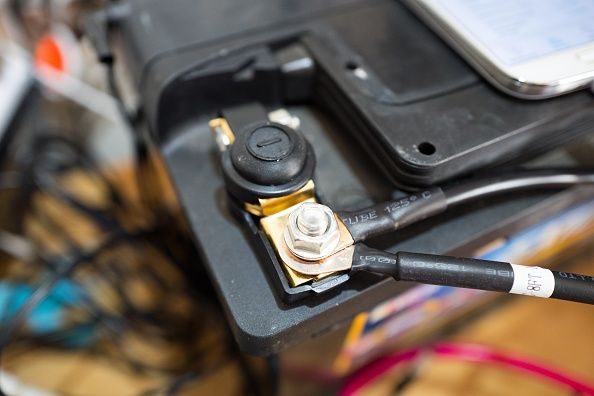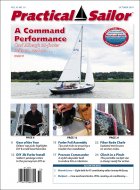Marine boat batteries can fail due to various reasons, and understanding these potential failure modes is crucial for ensuring their reliability. Here are some common ways 12-volt lead-acid marine batteries can fail:
To continue reading this article or issue you must be a paid subscriber. Sign in
Subscribe to Practical Sailor
Get the next year of Practical Sailor for just $34. And access all of our online content - over 4,000 articles - free of charge.
Subscribe today and save 42%. It's like getting 5 months FREE!






































Are the commonly available trickle chargers adequate for marine batteries?
Trickle chargers are not really sufficient, particularly if you are discharging the batteries much. I consider trickle chargers to really be battery “maintainers”, meaning they will help keep the battery from losing the charge over prolonged periods of not using a battery.
A marine battery charger with enough power to charge a moderately discharged battery bank is what you want.
I don’t know what sort of boat and power system you have, so YMMV, but on my O’Day 322 with 2) 6-volt GC batteries in series, for a 215 ah bank, I have a 20 amp charger.
Greg
I can’t understand with quality AGM batteries (which are sealed) being so cheep why anyone would choose to install flooded lead acid batteries. On a sailboat for starter bank or house bank. Also maintenance free batteries have all but completely replaced flooded batteries in the automotive industry. Having flooded lead acid batteries on a sail boat subject to healing and added that the house bank is also usually installed under a quarter birth or other interior space why would you choose batteries that off gas when charging potential dangerous fumes (granted the only reason this is less of a hazard then propane or gasoline fumes is hydrogen gas (the gas produced by unsealed lead acid batteries)is lighter then air so it can escape out hatches and n accumulate in a bilge. And really don’t like being tipped. your just asking for acid to spill inside your boat and they require more maintenance the sealed batteries. And AGM marine batteries are cheap (compared of course to lithium which it self has come down in expense recently but the cost of going lithium is more then just replacing your AGM house bank with lithium as the unique qualities of lithium demand you isolate the lithium bank from your alternator /starter bank and install better charge controllers and voltage regulators. But anyone still using flooded lead acid today is really ether a traditionalist or out of touch (or really cheap) and if your one of those people still using 6v flooded golf cart batteries in series to get 12 volts your really behind the times. And you should really seek help in accepting new ideas.
Sorry, AGM batteries are not a good choice for a cruiser, they need to be fully charged every day. This is not easy or cheaply done when away from the dock. My lead acid batteries have never spilled acid and I can check the condition of each cell and equalize when needed. AGM’s are great for lazy people tied to a dock. Not for someone out cruising
I remove my batteries at the end of the season, which many do not do, and they are stored over the winter in a warm building and on battery maintainers. I have come to the conclusion, unscientifically, that storing the batteries at or above 40 degrees will extend their life. The batteries which were fairly new when I purchased my boat in 2011, were replaced last year, when one started not holding a charge. I might be wrong but 12 years seems like a long life span for a battery. I now have the Optima battery. We’ll see how that works.
Here in Central Jersey we leave our 3 group 31 Duracell ( East Penn) AGM batteries on board the Ellis’ Island year-round. With 30 amp Sterling charger at the dock and 5 amp solar power at other times we have gotten over 10 years life out of them. Just replaced all 3 house batteries this spring and we’re hoping to get at least another 10 years out of them. 🤞
What about “maintenance free” lead acid batteries. When I asked the yard to replace my bank of lead acid batteries two years ago they put in maintenance free versions where I cannot check or top off the electrolyte levels. They assured me that I would no longer need to do this. This makes me nervous about longevity. Did I make a a mistake in letting them choose the batteries for me?
What protective sprays are best for use in the marine environment? Is there something I can coat connections with to prevent corrosion?